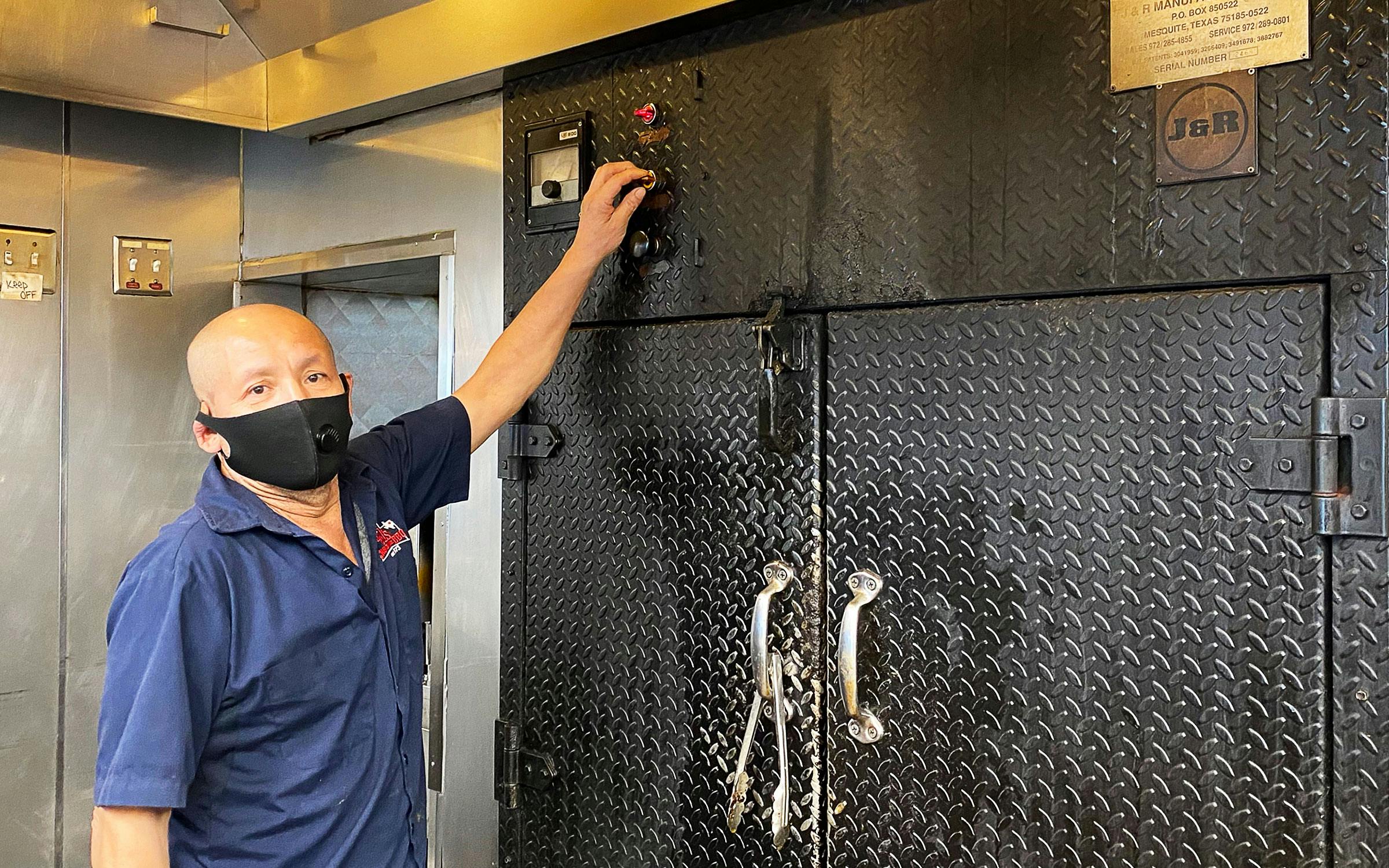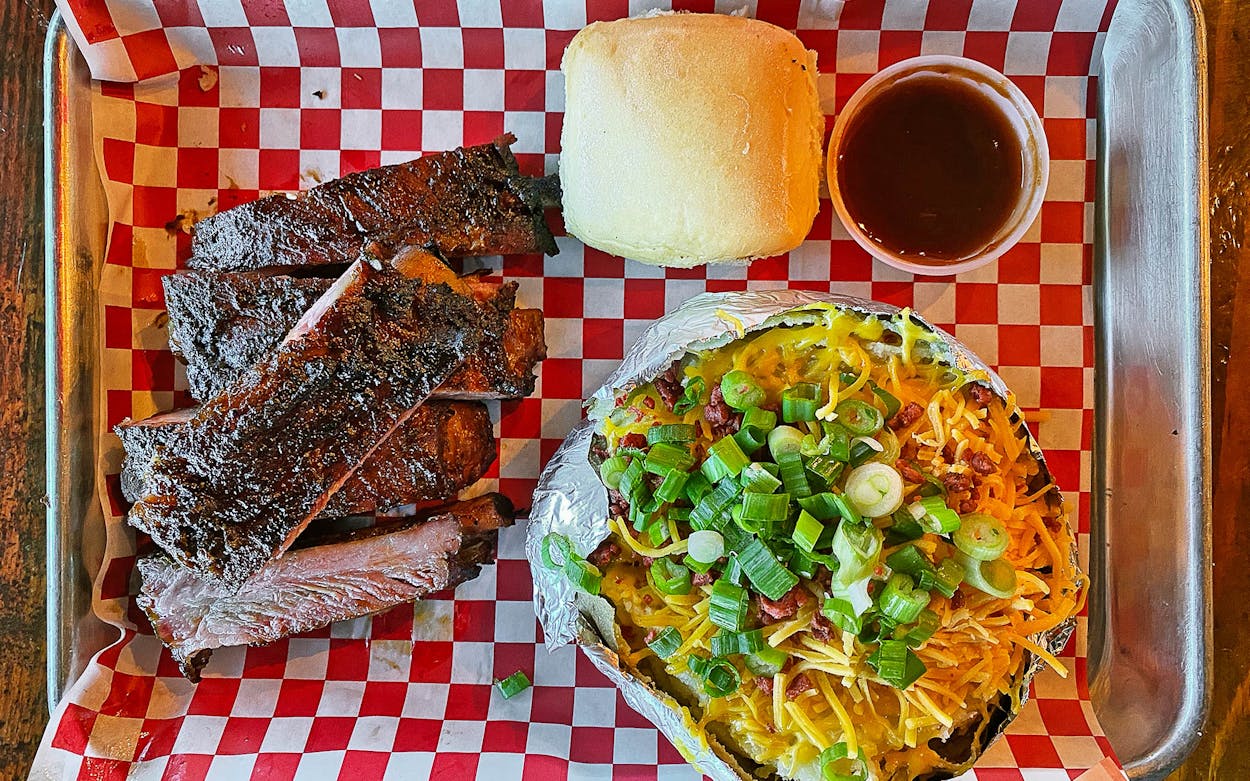This year will mark twenty years that I’ve lived in Dallas, and I’ve been going to Big Al’s Smokehouse BBQ for most of them. My early visits were long before I became an official barbecue editor, and mostly happened on Tuesdays for the pork rib special (which they now offer daily). Signed concert T-shirts lined the walls along the wood fence that corralled customers toward the counter at the old location, which is just a stone’s throw from the current location on Inwood Road near Dallas Love Field airport. Back then, the place was always packed for lunch, and you could count on seeing pitmaster Pedro Garcia working the cutting block.
Garcia was destined to work with beef. He started as a dishwasher at Big Al’s in 1977, at age fifteen, and two years later moved to the block. Barbecue was new to him then, as he had only worked as a ranch hand running cattle for money and riding bulls for fun as a kid in Cerritos, a small city in San Luis Potosí, Mexico. To escape violence directed at his family, he left home and traveled to the U.S. alone at the age of fourteen. He lasted a week at an oil and gas job in Liberty before he made his way to Dallas and to Big Al’s, where his cousin worked. Forty-four years later, he’s still at it.
In that time, Garcia has been witness to the changes in Texas barbecue, specifically in brisket. When he started, raw briskets arrived with the deckle—a fatty layer on the bottom of the brisket flat—still attached. They’d smoke those briskets with fat covering both sides, then “trim all the fat off the briskets,” Garcia says. The deckle is now routinely removed during processing, and the staff at Big Al’s trims the fat cap back to a quarter-inch thick before smoking. At the cutting block, Garcia now leaves the fat on the brisket when slicing up a customer’s order. Not much has changed about the cooking method, though. Big Al’s still cooks with all wood on an Oyler rotisserie, and rather than a thermometer, Garcia checks the doneness of his briskets with a fork. He knows it’s done when “the meat is loose. It’s soft.”
His position is an important one. Besides cooking the barbecue, Garcia is the first employee most people interact with. As the host, he says it’s important not to just keep your head down and cut. “You have to smile and talk,” he says. He looks up at the customers while his hands slice and chop their barbecue order. The portioning puts Garcia in control of profitability when barbecue is sold by the plate. He’s also the last line of quality control, keeping the bad cuts from being served.

“For us, the talent was always on the block,” owner Lauran Weiner says. She took over the operations after her father and Big Al’s founder Al Plaskoff died in 2018. Plaskoff opened the first Big Al’s in 1973 when Weiner was just a child, but she fondly remembers an early block man named Mr. Russell. Garcia does too, and said Russell knew some Spanish and would translate the barbecue items for Garcia as he trained to take orders from customers. Russell wore a white chef’s coat and tall cowboy hat, the latter of which Garcia emulated for a while. Weiner said Garcia has done more than take the torch from those early block men at Big Al’s. “He is the heart of this house,” she says.
Last Tuesday, when I stopped in for a plate of ribs, I could still see Garcia’s smile behind his face mask. Rather than the two side options, I opted for the stuffed baked potato. It was a plate of pure barbecue comfort food. Those ribs taste as good as they did two decades ago, with the perfect tenderness. They were piled high, and a warm roll was a welcome change from white bread straight from the bag. By the time I’d eaten all the ribs, the butter and cheese were melted inside the baked potato. It was the first barbecue meal in a while that had me savoring every bite.
In addition to the daily rib plate lunch special (ribs, two sides, and a roll for $13), Big Al’s is also offering two racks of those ribs for the price of one ($28) every Saturday in January—a strategy to get folks in the door at the beginning of a tough month. Restaurant owners like Weiner are accustomed to a slow January, but that usually comes on the heels of a profitable December. The holiday surge in diners and catering jobs didn’t materialize this season, making the start to 2021 even more difficult.
Business is down 40 percent overall at Big Al’s, and the catering side of the business is just shadow of its former self. “There’s no parties. There’s no celebrations,” Weiner says. Many office workers who used to visit often are now working from home, and most corporate customers didn’t organize parties for their staff over the holidays. “I don’t know that these habits are going to go back to what they were,” she says, trying not to get her hopes up too much for the future. Regardless, Weiner says of the restaurant industry, “We’re all trying to stick it out, and I intend to.”
Big Al’s Smokehouse Barbecue
3317 Inwood Road, Dallas
Phone: 214-350-2649
Hours: Monday–Saturday 11 a.m.–8 p.m.
Pitmaster: Pedro Garcia
Method: Wood-fired rotisserie with hickory
Year opened: 1973








